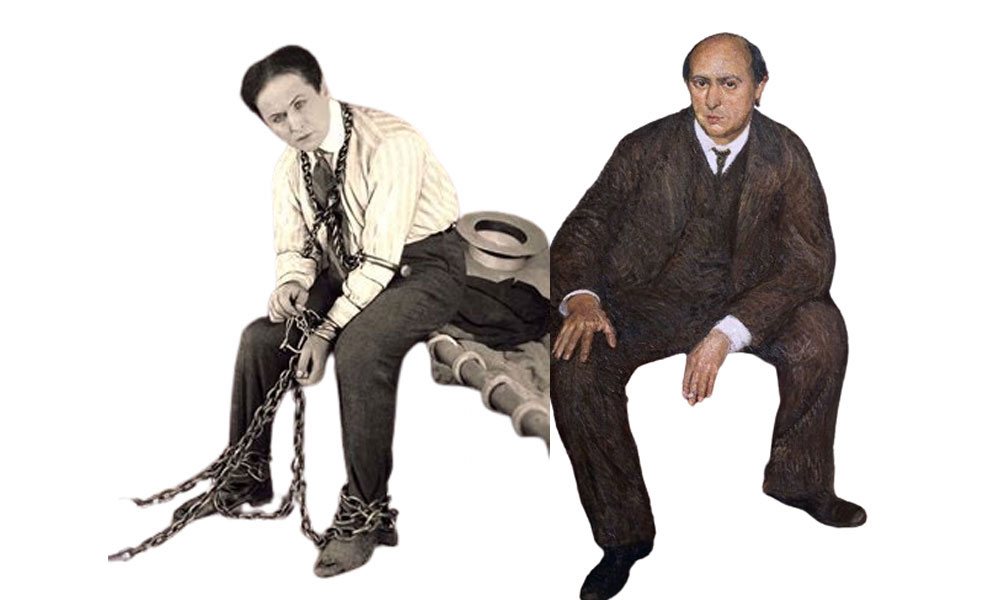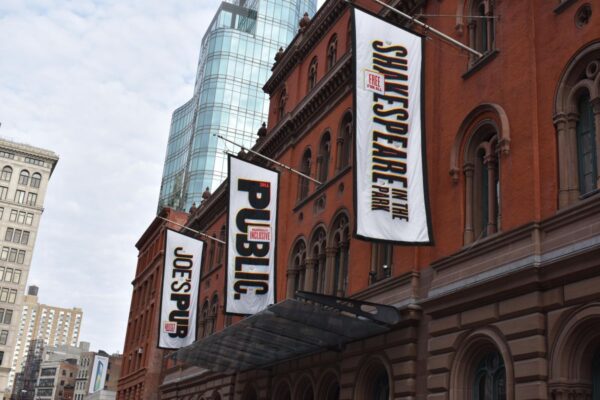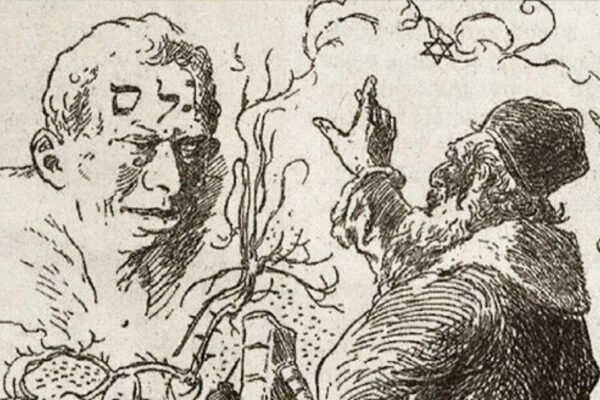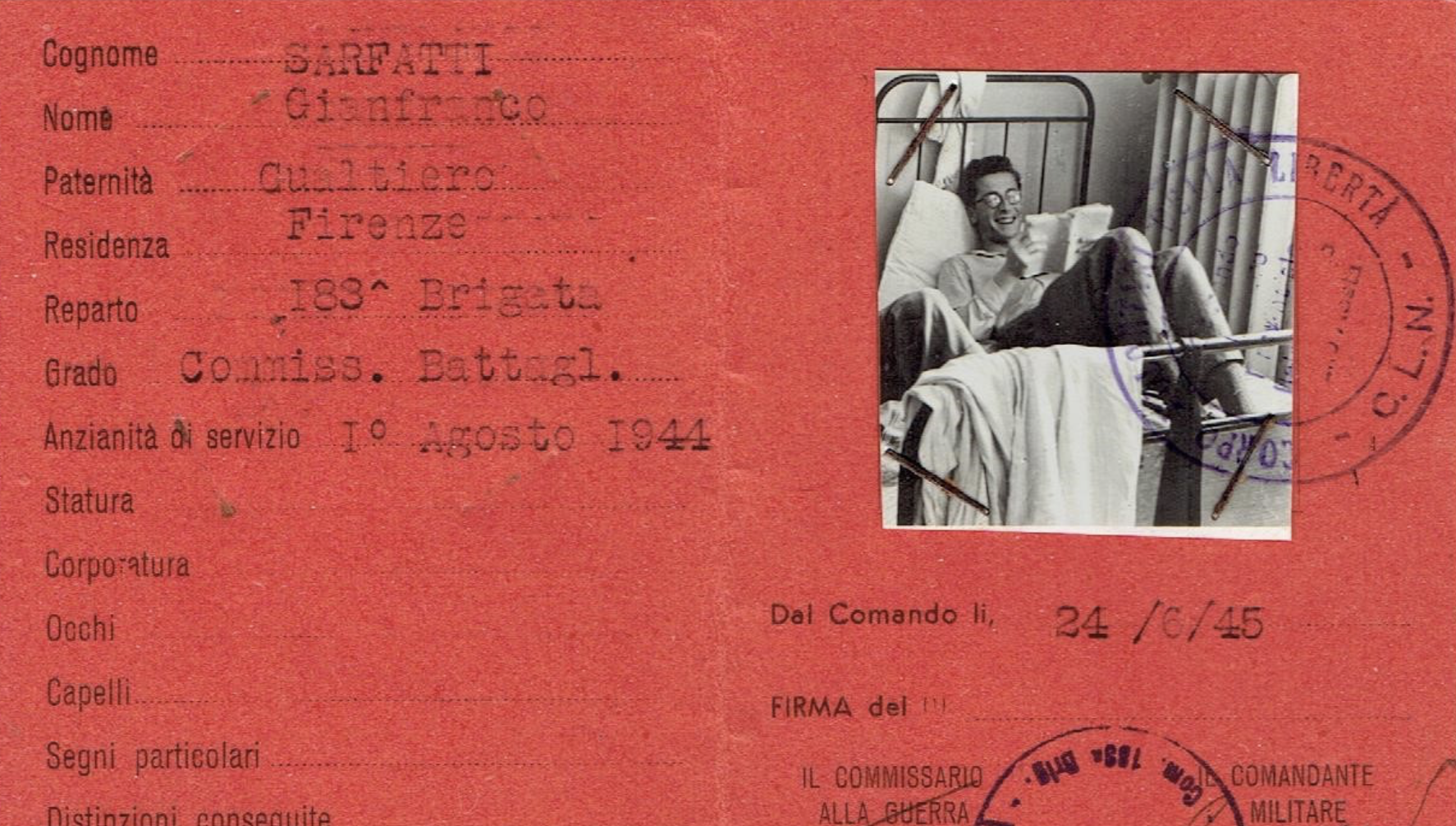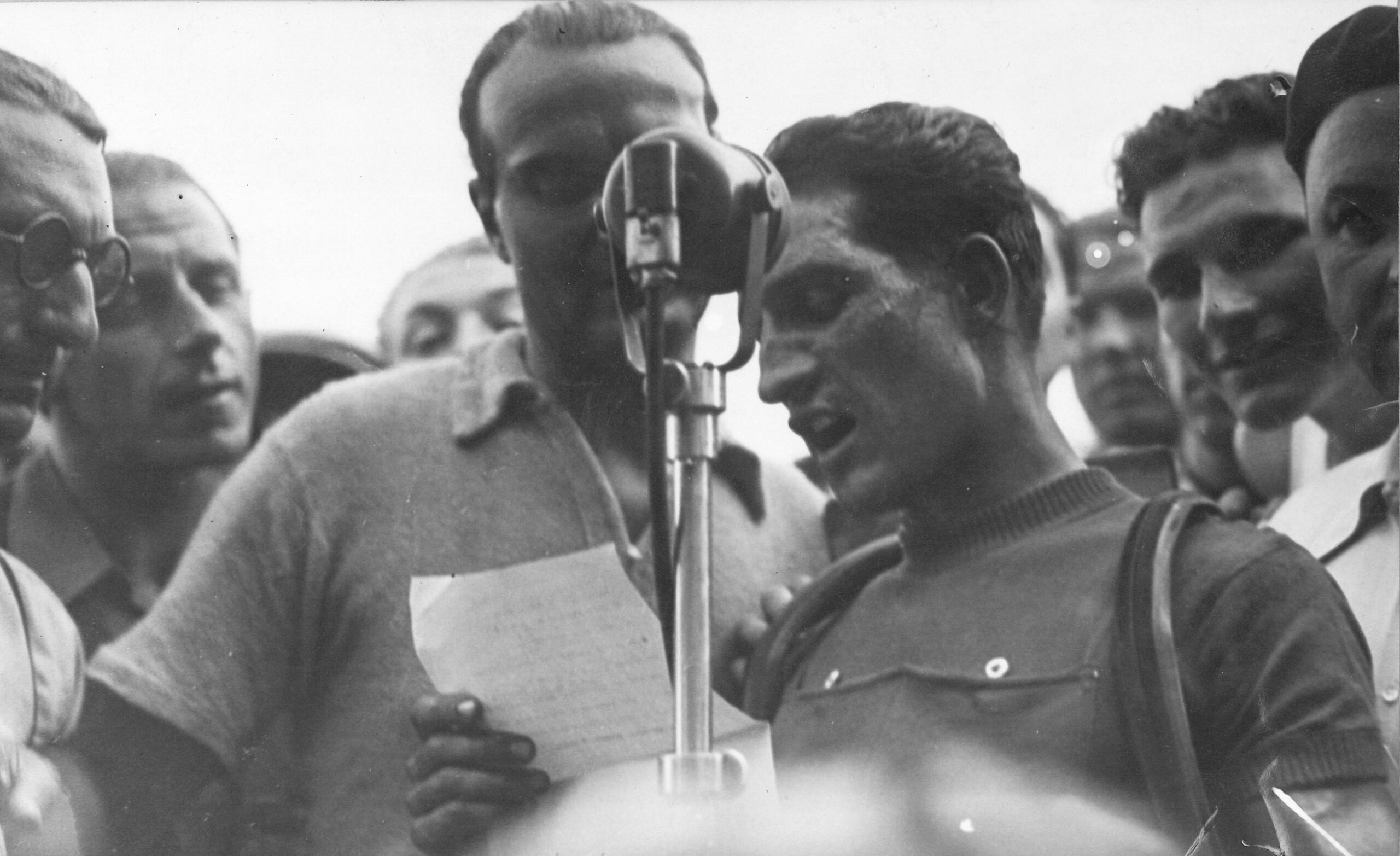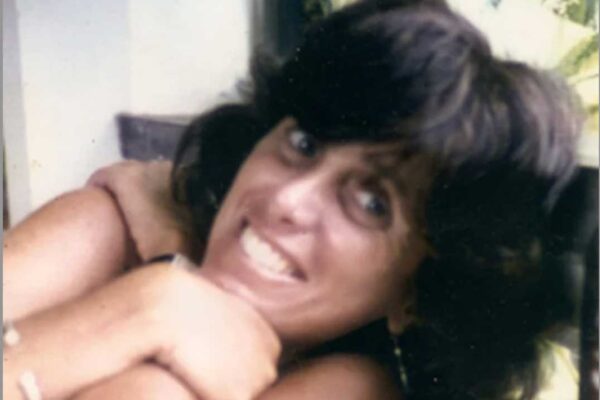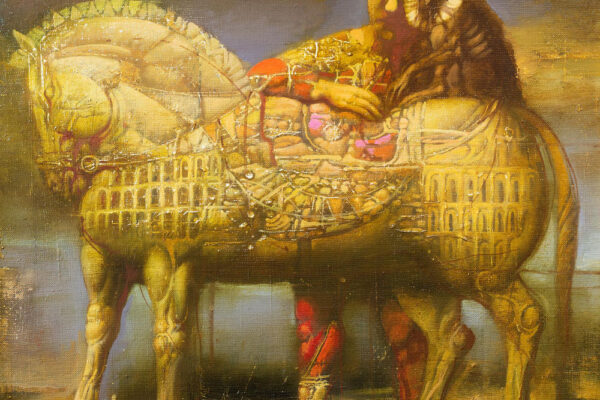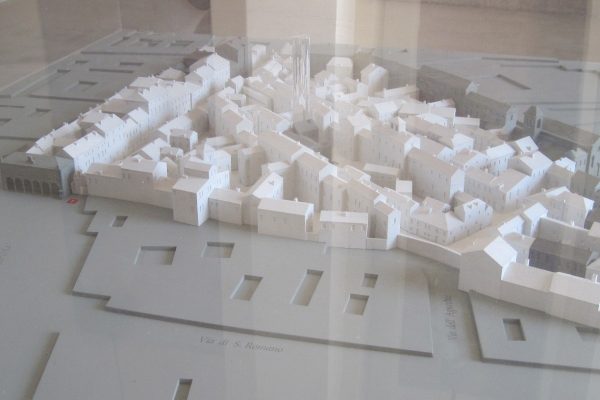This essay is part of a widespread reflection on the places and forms of historical Judaism.
E: It’s going to be Pesach soon. What are you thinking about? Will you tell me a story?
A: Sure, but a different kind of story. I’ve been pondering the Jewish experience in America and the concept of a ‘Jewish spirit or sensitivity. And how some individuals can be both radical and conservative, deeply rooted in tradition yet eager to innovate.
E: I said a story!
A: I will tell you about two men; one perhaps the greatest magician of our age, the other, a composer who single-handedly began a new era in modern music. I am referring to Harry Houdini and Arnold Schoenberg. One could say that they had absolutely nothing in common, but perhaps they did. In any case, together they embody what I want to tell you about…
In the vein of the great Italian classical scholar Giorgio Pasquali (1885-1952), who made fundamental contributions to the field of textual criticism in essay collections such as Pagine stravaganti di un filologo, (Extravagant Pages by a Philologist), I would like to share some extravagant thoughts to wrap up this year’s Passover.
By extravagant, I mean wandering beyond boundaries or exceeding the reasonable.
A particular kind of ‘Jewish spirit’ expresses itself with particular irreverent genius at times of societal transformations and turmoil. It is a spirit of resilience, adaptability, and creativity, often manifesting itself in the form of imaginative wanderings that stem from yet deviate from canonical teachings.
I am thinking of two connected phenomena: the need to reinvigorate a tradition by reforming it and the surprising encounter between the European Jewish experience and the continuum of high and lowbrow culture of the U.S. in the 20th Century.
I think of these two men as my guides in these ramblings. Both were born in 1874, respectively, in Vienna and Budapest. Both came to the U.S.: Houdini in 1878, as a four-year-old, following his family from Hungary; Schoenberg in 1933, at fifty-nine years of age, following the rise of Hitler.
Ehrich Weiss, under the stage name of Harry Houdini, was to become perhaps the most famous magician of all time (as well as an escape artist, illusionist, and showman). By 1933, Arnold Schoenberg had established himself as one of the central musical personalities of his time. His innovative, uncompromising musical language crowned the late Romantic period and opened new possibilities for the future of classical music, which are still felt today.
Houdini was the son of Mayer Samuel Weiss, a Hungarian rabbi, and his second wife, Celia Steiner. He was the third of the couple’s seven children. His father, having arrived in the U.S. in middle age, never mastered English and held services (when he could) in German and Hebrew. He settled in Appleton, Wisconsin (presiding over 15 Jewish Families without a synagogue, later in Milwaukee (where there were 500 Jewish families,) and finally in New York. For various reasons (including linguistic barriers,) Mayer Samuel Weiss remained a rabbi without a congregation. According to Kenneth Silverman’s Houdini The Career of Ehrich Weiss, to support his family, Rabbi Weiss conducted services outside Milwaukee’s organized religious life, often borrowed a shofar and a Torah before holidays, briefly opened a school, and sometimes performed as a mohel. Similarly, in New York, “He had business cards printed up introducing himself as MINISTER OF THE CONGRE. ADATH JESHURUN,” but as Silverman informs us, “That the congregation went unlisted in the city directories of the period, indicates that it was a small group with no synagogue.” In other words, the future Houdini grew up steeped in Judaism but in a struggling family embodying a European Judaism that found neither spiritual nor financial support in the new country.
Houdini was most likely affected by witnessing his father’s religious and financial failures. Perhaps as a reaction, as a teenager, he first repeatedly escaped from home and eventually from organized religion. Like his older brother before him, Harry Houdini married out of faith and defined himself as a Jewish non-believer.
Yet, it seems that his remarkable “performative imagination” was anchored in the Torah’s stories and perhaps can be seen as a radically secular commentary on some of its central figures and narratives.
Houdini’s signature act famously consisted of getting bound in chains secured with multiple padlocks and miraculously freeing himself either in plain sight, in a coffin, or underwater: a virtuosic and mesmerizing exercise in agility and contortionism.
This act conflates circus-like entertainment with an ironic take on the Akedah (binding of Isaac) in Genesis 22. Isaac’s binding, certainly one of the most arresting and complex images of the Hebrew Bible, becomes a trick in Houdini’s irreverent secular imagination.
Further in Houdini’s career as an escape artist, as the ultimate self-unbinder, the Passover story becomes an echo or a transposition of it: the passage of the Hebrews from bondage in Egypt to the Promised Land becomes a struggling artist’s liberation from financial struggle to public acclaim and the hard-won acceptance of a Jewish immigrant into American show business.
Houdini saw himself as a one-person special effect, a deus ex machina, a trickster with hefty artistic ambitions. One can imagine his irreverent reading of the God of the Old Testament as the source.
In Jewish tradition, there are four levels for interpreting sacred texts: literal, allegorical, moral, and mystical. Perhaps Houdini was suggesting a fifth one: the parodic.
For Passover, we recite Psalm 114 (Betzet Israel):
[…What is wrong with you, sea, that you fleeJordan, that you turn back
mountains, that you dance like rams […]
Robert Alter suggests that “the psalmist’s intentions to be literal—that is to say historical—a celebration of God’s Spectacular Intervention in History on Behalf of the people of Israel. One could speculate what Houdini’s parodic reading of that psalm could be…
Another one of Houdini’s “escapes,” with strong biblical echoes, occurred on September 26, 1911 at Boston’s B.F. Keith’s Theater. The previous week, a “sea monster” (a whale or perhaps an elephant seal) had washed up on Boston’s shore, capturing the media’s imagination. After having the beast gutted and washed, a group of businessmen led by a famous taxidermist contacted Houdini, who enthusiastically agreed to bring the sea monster to the B.F. Keith’s Theater stage and attempt to escape from its belly after being bound by extra strong handcuffs and leg irons provided by the police headquarters”. Houdini emerged from the belly of the beast, as the biblical Jonah, to the audience’s delight.
What his fans did not know was that they had witnessed his most dangerous act to date: he nearly suffocated in the 15 minutes in the belly of the beast from the fumes of the arsenic used to embalm the carcass.
While wandering across the United States searching for work, Houdini was fascinated by the “magic” performed by Muslim performers and American Indian medicine men and often took inspiration from their religion and tradition. Houdini and Bess Rahner, his wife/stage partner, at times, worked with a magician whose stage name was Abd-el-Kadir and later devised an act they called “Mysteries of Mahomet” in which Bess levitates in mid-air with no visible means of support.
Harry Houdini carried with him and treasured one of his father’s Bibles. Yet, in letters, he proclaimed himself a non-believer. He describes himself as a modern man who no longer believes in God yet feels a longing for that belief. A position resembling that of Nietzsche: “God is dead, but given the way of men, there may still be caves for thousands of years in which his shadow will be shown. And we — we still have to vanquish his shadow, too.”
While serving as President of the Society of American Magicians (from 1917 to his death in 1926), he relentlessly opposed his colleagues who alleged they had transcendent powers and denounced all fraudulent claim to that effect. He believed that magic is merely a form of man-made artistic expression, a very traditionally Jewish position.
In an article called Why I am a Skeptic, discussing pseudo magic and spiritualism, he writes, “My over 100 séances abroad have left me unconvinced…”.
If Houdini rationally refuted all claims of transcendent dimensions, he understood its appeal and reveled in its parody. While accepting to be tied up and placed in different containers to be sunk into rivers, he often warned the audience of the possibility of his death; he insisted on having a phone placed next to him: “If I die, I’ll dial in from the other dimension.” With jokes like this, he highlighted a connection between magic and technology that is still relevant today.
Houdini’s career can be seen as a successful immigrant story: after a decade of struggle and self-doubt, wandering across the U.S. searching for a commercial break while performing in small venues, sideshows, and penny museums, in 1899, he rapidly attained public success. A manager, Martin Beck, was captivated by the handcuff trick, booked Houdini on the Orpheum vaudeville circuit, and helped orchestrate an impressive publicity campaign. Following the U.S. success, Beck booked Houdini In England (where he performed escaping from Scotland Yard’s chains and handcuffs) and Germany, France, and Russia, Russia —shortly after the infamous Kishinev pogrom of 1903— (where he escaped from a Siberian prison van). By 1920, Houdini was an international sensation.
Like many first-generation immigrants, his dream was to own a home. Returning from a European tour in 1904, he purchased a brownstone at 278 W. 113th Street in Harlem. He described the day of signing the contract as the happiest of his life.
Houdini did not participate in Jewish life past adolescence, but his attachment to Judaism took on many forms. When his mother died, he was said to recite Mourner’s Kaddish every day for a year. During World War I, he created the Rabbis’ Sons Theatrical Benevolent Association, of which he was president, with Al Jolson serving as vice president and Irving Berlin as secretary. The organization raised funds for Hebrew associations that helped military families and the Red Cross.
When he passed away on Halloween in 1926, his body was transported from Detroit to New York in the bronze casket Houdini had created for the “buried alive” act. Among the thousands who followed Houdini’s funeral procession on the streets of Manhattan, there was a cross-section of his fans, from workers to Hollywood stars, as well as several religious Jews.
E. What about the composer?
A. Oh yes, Schoenberg. I will also tell you something about him. As different as the two men were, I want to leave it up to you to see why I like to think of them together—a magician and a composer.
While Harry Houdini reached international fame, starting from side shows and penny museums and becoming a champion of lowbrow entertainment, Arnold Schoenberg’s success grew within early twentieth-century Viennese classical music, that is to say, the pinnacle of high-brow culture.
By the time Schoenberg arrived in the U.S. in 1933, Houdini had been dead for seven years, yet had they met, the two would have easily found common ground. I believe they were both principally interested in understanding life in its totality: human interactions with the natural and the miraculous. In an early essay on Mahler, Schoenberg affirms:” We think we understand what is natural: but the miracle is extremely natural and the natural, extremely miraculous […] The more closely we observe the most straightforward phenomenon, the more mysterious it appears to us.” A statement, one could speculate, Houdini would have endorsed.
What I find most compelling about Schoenberg is his balancing of opposites — he was, at one, a conservator and a radical innovator—. And his larger-than-life ambition. By the late 1910s, he concluded that the great Viennese and Central European musical tradition that he loved—˙Bach, Mozart, Beethoven up to Mahler—could no longer express the rapidly changing world on the cusp of Modernity. Music needed to be re-thought and the tradition re-vitalized. In 1908, he began experimenting with progressively doing away with traditional keys and tonal centers. By 1923, he had fully developed his twelve-tone composition technique, marking a clear break with the music of his time.
He was never against the tonal music of the past; on the contrary, he felt that as a composer, he needed to take a clear step forward to live up to that tradition, as his predecessors had done. In his imagination he heard the music of the future.
The central “contradiction” regarding Schoenberg (and the image of him passed down to us) is that he was a musical revolutionary who believed that radical innovation was the only way to guarantee continuity—albeit through rupture— to the Germanic classical musical tradition. For example, while developing his twelve-tone technique that did away with key signatures and allowed for any musical dissonance, in 1921, he wrote Theory of Harmony, a very conservative and thorough book about traditional tonal harmony.
Arnold Schoenberg was born into a lower-middle-class Jewish family. His father, Samuel (like Houdini’s), was a Hungarian Jew who had traveled to Vienna and settled in Leopoldstadt, the former Jewish ghetto. His mother, Pauline, was a piano teacher. Arnold started playing the violin at age eight and soon began to compose and arrange. As a youth, he was not exposed to concerts (too expensive for a modest family) and was musically self-taught except for a class in counterpoint with Alexander Zemlinsky, a protégé of Brahms. After his father’s death, Schoenberg was forced to leave school and work at a bank to support his family.
As a young man, he frequented avant-garde writers and artists in Vienna and beyond, establishing long-lasting friendships and partaking in a vibrant milieu.
In 1898, the 24-year-old composer converted to Protestantism, and in 1933, as the Nazis declared his music “degenerate,” he returned to Judaism. In a letter to Anton Weber, he described his “reconversion,” which took place in Paris, with Marc Chagall as a witness, before leaving for the United States.
Though highly original, his early compositions (1894- 1907) are steeped in the late Romantic tradition of Brahms, Wagner, and Richard Strauss. Paradoxically, his output from this early period —among others,Verklärte Nacht, Pelleas und Melisande and Gurre-Lieder— is still the most often performed of his extensive repertoire.
Gurre-Lieder exemplifies several of the issues that fascinate me. It began in 1900 -1903 as a commissioned chamber piece: a song cycle for soprano, tenor, and piano in the late Romantic style of Wagner. Then he set it aside, returning to it in 1910-11 when he completed it, reimagining the work for full orchestra and choirs. The piece—an impressive wall of sound— gives us a sense of the ambition of the young composer· the orchestra size of 150 instrumentalists makes Mahler’s Eight Symphony sound quaint, not to mention three choirs and vocal soloists, engaged in a three-part composition that lasts about an hour and a half!
Gurre-Lieder premiered in Vienna in 1913 to enormous popular and critical success, yet the composer by then already regarded it as “in his previous style” and was only concerned with twelve-tone composition.
To imagine Schoenberg’s state of mind at Gurre-Lieder‘s premiere in 1913, one has to remember that he had been moving radically away from tonality, pushing boundaries as well as the audience’s expectations. The year before, in 1912, Pierrot Lunaire, a rule-breaking piece of his, had had significant success. He simply could not revel in the tonal lushness of Gurre-Leider while pushing his new musical revolution. World War One was approaching, and Schoenberg did not want to look back.
Following the intuitions of the Austrian composer Josef Matthias Hauer, Schoenberg developed his twelve-tone (dodecaphonic, or serial) system of composition in 1923. Twelve-tone music is based on the idea of the equivalence, from a harmonic point of view, of each of the 12 semitones of the tempered scale, around which other sounds gravitate without establishing tonal hierarchies. To the listener, initially, the music sounds different, difficult, and cerebral; thus, it was labeled “atonal.” Schoenberg loathed the term and viewed it as nonsensical: music is made from tones; how can you have “atonal music”?
The method was adopted first by his pupils and colleagues Alban Berg and Anton Webern (The Second Viennese School).
Schoenberg as a professor at the Berlin Academy of Arts (1925-1933), witnessed the rise of Nazism and, by ’33, found that his twelve-tone theory, much like Albert Einstein’s theory of Relativity, was mocked as foreign to German culture.
Since then, generations of composers, including Hanns Eisler, Ernst Křenek, and Luigi Dallapiccola, have adopted Schoenberg’s method or expanded upon it in the cases of Luciano Berio, Pierre Boulez, Luigi Nono, Henry Poussier, and Karlheinz Stockhausen. Even composers who initially opposed serialism, such as Stravinsky, eventually attempted compositions with the twelve-tone technique.
Arguably, no compositional technique has been as influential on contemporary music as twelve-tone theory, and yet its creator, Arnold Schoenberg, is still among the least performed and understood great musical innovators today. In comparison, the music of his pupils Webern and Berg has gained wider acceptance.
The enthusiastic endorsement of Schoenberg’s twelve-tone technique by major musical personalities such as Glen Gould, Leonard Bernstein, and John Cage did not alter the general public’s skepticism. Even The Beatles (via Stockhausen) were influenced by Schoenberg.
Schoenberg comes across as remarkably single-minded and determined in his music and writing. Yet, his relationship with both Judaism and the classical music tradition can best be described as a constant movement toward and away, like that of an accordion.
Most of Schoenberg’s music is instrumental, but even when there are vocal parts (for speaker, soloists, or choir), the composer warned against placing too much importance on texts. “A few years ago, I was very ashamed when I realized that I didn’t have the faintest idea of what the poetic texts of some of Schubert’s Lieder that were well known to me contained. However, after I had read the poems, I realized that I had not gained any benefit from them. Reading, in fact, had not at all induced me to change my way of conceiving musical interpretation.”
Die Jakobsleiter (Jacob’s Ladder) is an early unfinished oratorio that Schoenberg began in 1914-15, was performed for the first time in 1961, ten years after Schoenberg’s death. In a letter, he wrote that in Jacob’s Ladder, he had wanted to stress the connection between his musical revolution and his Jewish religious feelings.
He first addressed Jewish themes in writing in 1926 with Der biblische wag (the Biblical Way), a three-act play about Jews’ political aspirations in the modern world. In it, he advocates the idea of a militant United Jewish Party.
For his unfinished opera Moses and Aron (on which he worked in 1930-32) — seen by some as his greatest work— Schoenberg wrote a libretto adapted from the Book of Exodus in which Moses is seen as the ideal incarnation of a national and spiritual redeemer.
In 1938, commissioned by Rabbi Jakob Sonderling in Los Angeles, he composed a Kol Nidre for speaker choir and orchestra. In a letter to Paul Dessau from November 1944 he writes: Dear Mr. Dessau: […] At my request, the text of the Kol Nidre was altered. […] When I first saw the traditional text, I was horrified by the “traditional” view that all the obligations that have been assumed during the year are supposed to be cancelled on the Day of Atonement. Since this view is truly immoral, I consider it false. It is diametrically opposed to the lofty morality of all the Jewish commandments. […]
A Survivor from Warsaw, Op. 46, is a powerful work for narrator, chorus, and orchestra. The Czech novelist Milan Kundera called it “the greatest memorial ever dedicated to the Holocaust in music.”
During the last months of his life, Schoenberg was working on his Op.50 Moderner Psalm. He intended to put biblical and new psalms to music. In Dreimal tausend Jahre, he set a lyric poem from the Jordan Lieder by Dagobert Runes. The second of the series uses the original text Psalm 130, while the third is based on Schoenberg’s own text, the first of sixteen short “psalms” which formulate his thoughts as a personal address to God. The composer had entitled each of the individual texts either Psalm or Modern Psalm and given them the collective title of Modern Psalms. At the time of his death, however, he had composed music only for the first text, for speaker and a six-voice chorus, accompanied by orchestra.
Though Schoenberg is mainly known as a composer and music theorist, he was also a distinguished teacher, writer, and painter. He participated in the expressionist group Der Blaue Reiter and showed his work alongside his friends Wassily Kandinsky, Kokoshka, and Franz Marc. In addition to drawings and watercolors, he produced sixty-five oil paintings. In 1916, Egon Schiele painted a very intense portrait of Schoenberg, and in 1927, Man Ray took a now-famous photo of the composer. A sophisticated reader, Schoenberg was in touch with many major German poets and prose writers, including Franz Werfel and Else Lasker-Schüler.
Much later, in 1948, when Thomas Mann (as Schoenberg) was in the U.S., he loosely modeled the protagonist of Doctor Faustus, Adrian Leverkühn, a composer in exile, on Schoenberg. Despite their friendship and mutual respect, Schoenberg was very critical of Man’s protagonist, in whom he read a demonic sketch of his personality.
After a stay in Boston, Schoenberg moved to Los Angeles in 1934. That year, dismayed at the disinterest in his twelve-tone music among audiences, he composed Suite im alten stile (Suite in the old style in G major) for string orchestra, which was his first extensive tonal work after a quarter-century of involvement with the twelve-tone technique. He became a U.S. citizen in 1941 and held teaching positions at the University of Southern California) and the University of California at Los Angeles.
Despite the rare occasions for his music to be performed, Schoenberg’s American compositions display an ever-increasing mastery and freedom in handling the 12-tone method. Schoenberg’s relationships with fellow emigres in America were often difficult: he detested Theodor Adorno (his neighbor in Los Angeles) and had fallen out with Thomas Man, while he maintained real friendships with Hanns Eisler, Alma Mahler-Werfel, Erich Korngold, Alexander Zemlinsky, and Bruno Walter. Schoenberg was particularly disappointed when Jascha Heifetz, widely regarded as the best violinist of his time, called Schoenberg’s masterful violin concerto “unplayable.”
The cultured and sophisticated Arnold Schoenberg was superstitious and suffered from Triskaidekaphobia, the fear of the number 13. His opera, Moses and Aron, has Aaron spelled with one “a” to avoid a thirteen-letter title. Schoenberg was born on September 13, and when he reached age 76, he feared for his life since an astrologer had pointed out that seven plus six equals the loathed 13. He died, in fact, on Friday, the 13th 1951. The composer also had a fixation on the number 7, to which he ascribed mystical powers. Lastly, his obsession with numbers made him go to great lengths to publish his music so that the number of each opus corresponded to the year of composition.
A conservative and a radical man of many contradictions, Schoenberg possibly arrived in the U.S. too late in life, or the U.S. musical life was too conservative to embrace him.
Unlike other artists who found stimuli in exile for their creativity, Schoenberg lost his audience and culture of reference. As he grew older and saw that his twelve-tone compositions were struggling to become part of the performed repertoire, he expressed, in various forms, his disappointment.
For a man who thought that the entire tonal system since 1600 had exhausted its possibilities and had created a new system to replace it, it must have been difficult to find himself aging and struggling for money. He bitterly expressed his disillusionment in a letter to the violinist Rudolf Kolish: “American musical life is a “commercial racket,” dominated by American composers, Boulanger’s pupils, the imitators of Stravinsky, Hindemith and now Bartok as well.”
As British musicologist Stephen Walsh states in his biography of the Viennese composer, “Schoenberg may be the first ‘great’ composer in modern history whose music has not entered the repertoire almost a century and a half after his birth.”


